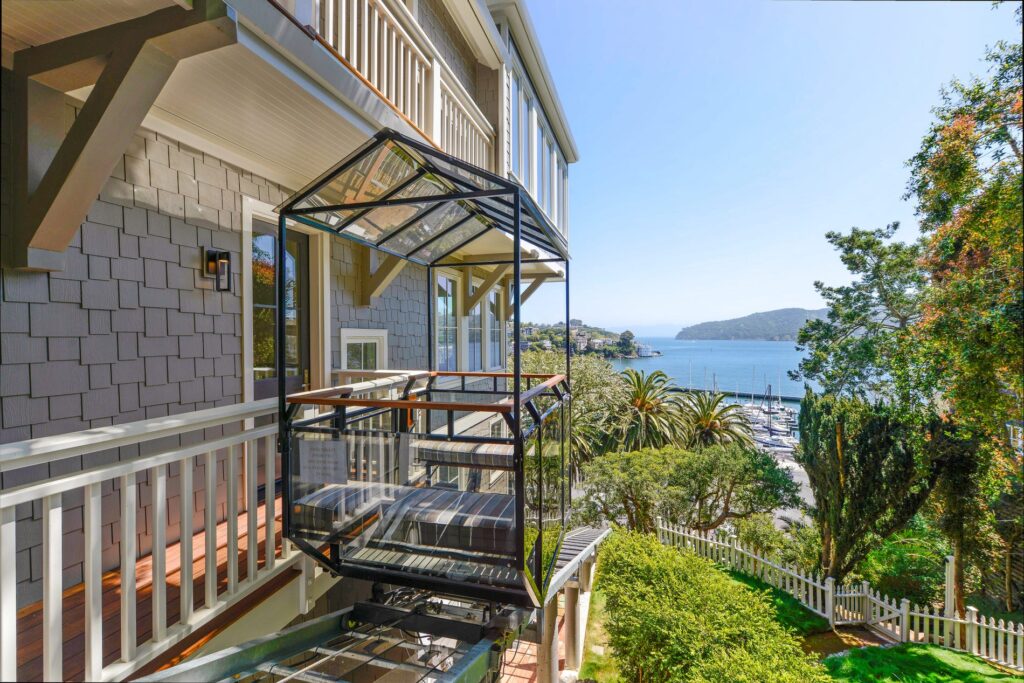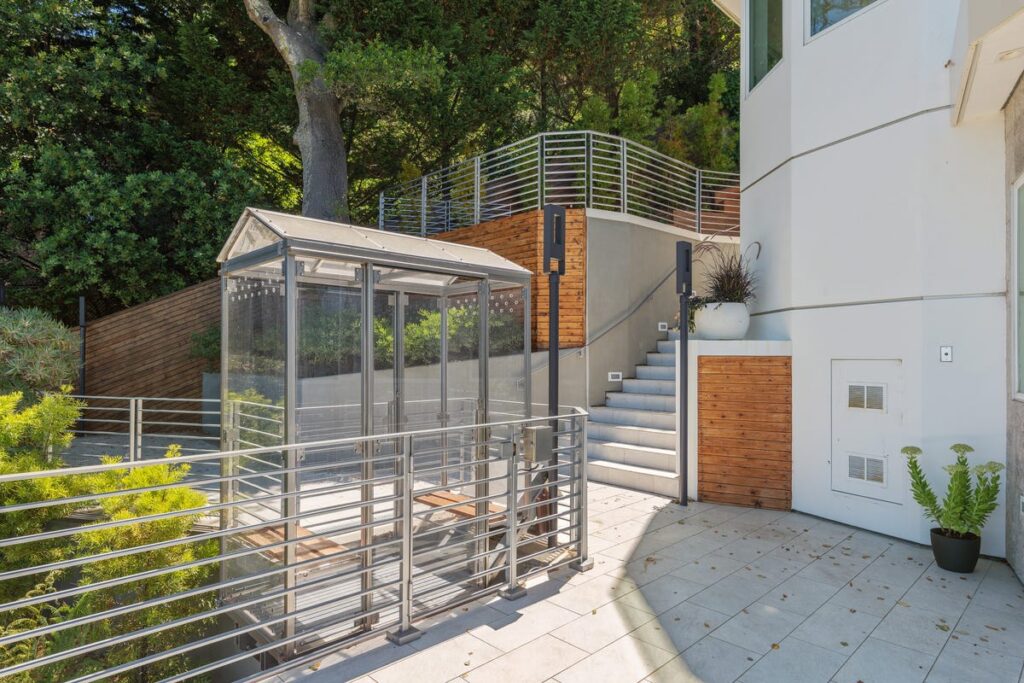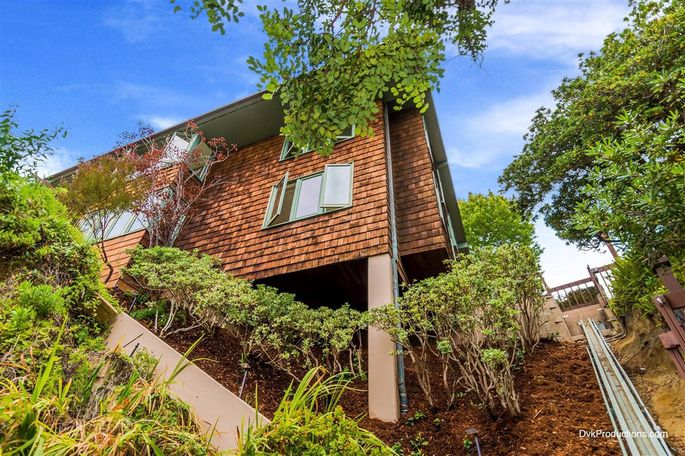Expansive, one-of-a-kind views are a significant selling point for luxury homes, often garnering bids that are 30 to 50 percent more than the asking price. But a killer view can come at the expense of accessibility, with homeowners having to climb steep flights of stairs or traverse winding driveways to take full advantage of their estate.
However, luxury homeowners in California have found a unique way to increase their home’s accessibility and value by installing hillavators to make the journey from their residence to a private beach, bay or entertainment area more manageable.

A hillavator at a listing in San Francisco’s Yacht Club Marina. (Photo credit: Open Homes Photography)
According to a report by Business Insider, more homeowners are beginning to invest in hillavators, which are also known as funiculars, lifts, trams or outdoor elevators.
“Our hillside terrain effectively requires them when people don’t want many, many steps up to their front door from the street or garage,” Compass agent Camara Scremin told Business Insider. “Obviously, these hillavators are an alternative to an elevator as sometimes people don’t have the space for an elevator, and they can be prohibitively expensive.”
“One too many loads of party supplies up a lot of stairs or a broken leg, and people start to think it [a hillavator] may be a good investment,” she added.
 Brokers: are you too focused on the small details?
Real estate is full of details both big and small. The key is to find the tech that truly connects them. READ MORE
Brokers: are you too focused on the small details?
Real estate is full of details both big and small. The key is to find the tech that truly connects them. READ MORE
These outdoor elevators are built with weatherproof materials and are customized to handle larger passenger loads and steeper inclines. Homeowners should expect to spend at least $20,000 for an outdoor elevator, but the final cost depends on several factors.
The home’s terrain, local building code and permit costs, system type (e.g., continuous loop traction), capacity requirements, aesthetic choices and extra safety features, such as a code entry, can quickly boost the price by thousands.
Bill MacLachlan, the president of Minnesota-based outdoor elevator company Hill Hiker, told The Wall Street Journal his company installs approximately 40 residential hillavators per year, with half of the projects located in California.

A listing in Sausalito with an outdoor elevator. (Photo credit: Open Homes Photography)
The process of getting a hillavator is complicated, and requires careful design and engineering, manufacturing, assembly, quality control, installation and a final safety evaluation.
In an explainer on Hill Hiker’s site, MacLachlan said the installation takes at least two weeks, but the timeline for things such as design, engineering and permitting will vary.
“The entire project duration from start (downpayment) to finish (inspection) can vary greatly and depends on many factors such as the complexity of the system, material ordering lead times, the level of engineering, permitting and inspection needed, the foundation and landings type, shipping, etc,” the explainer reads. “Because many of these tasks are out of [our] control, it can be very hard to give accurate and complete timelines.”
Beyond installation costs, homeowners must consider the cost of yearly inspections and maintenance, which range from $75 to $100 per hour.
“We have a cover for inclement weather and are installing a backup generator system to cover that and the house during outages,” Joe Root of Cottage Coastal Builders told Business Insider while explaining the cover protects the elevator’s main components and reduces maintenance costs.

A San Diego home with an outdoor elevator. (Photo credit: realtor.com/ Dax Photography)
Homeowners must also evaluate the safety risks of owning an outdoor elevator. Shoddy work can cost thousands to fix and can put homeowners and their guests at risk.
“It was dodgy,” Mr. Nipsel, a homeowner with a hillavator, told WSJ while recounting the time his head got caught in the door of the cab as it slowly moved downhill. “I could just see the headlines if I got decapitated!”
But the Nipsels spent $150,000 on a new outdoor elevator, which allowed them to rent their Malibu property for 10 to 15 percent more during peak vacation seasons.
However, there doesn’t seem to be a consensus on how much value an outdoor elevator adds to a home’s resale price. Andrea Crossman, an agent who specializes in selling hillside homes, told WSJ homebuyers tend to see hillavators as ‘must-haves’ when there are more than 300 steps.
For homes with 100 steps or less, Crossman says buyers aren’t as willing to pay more for an outdoor elevator. They’ll simply move on to another listing without one.
Source: click here
















